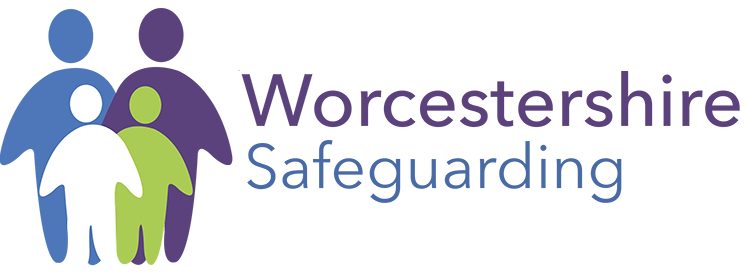GET SAFE
GET SAFE is the Worcestershire multi agency response to the criminal exploitation of children and young people aged 10- 25 years of age.
GET Safe stands for:
- Gangs
- Child Sexual Exploitation
- Trafficking
- Modern Day Slavery
- Absent or Missing
- Forced Marriage
- Criminal Exploitation
Our approach to GET SAFE also includes: County Lines, Honour based violence, Female Genital Mutilation (FGM) and Radicalisation. We use the contextual safeguarding and signs of safety approaches to understand the young persons world and the risks and vulnerabilities alongside the protective factors and strengths.
We are clear that criminal exploitation is harm and abuse and that as partner agencies we have a duty to work together to identify when this is happening and take action to address and tackle this at all levels. This includes working together to protect and support those young people being harmed and abused, identifying the locations use to carry out this abuse, disrupting the activity and work together to pursue and prosecute the perpetrators who carry this out.
In Worcestershire we have a clear multi agency strategy and action plan – WSCP Child Exploitation Strategy 2020 – 2022
This GET SAFE procedure does not replace our Child protection procedures, these should be followed where appropriate to safeguard and protect children and young people. These can be found on this page alongside this procedure. The GET SAFE procedure is a process in which we identify risk and vulnerability and take multi-agency action to address this is a well-planned and co-ordinated way at the earliest opportunity for children and young people.
The GET SAFE Risk assessment Tool
In Worcestershire we have a GET SAFE risk assessment tool which all partners use to identify GET SAFE risks and concerns for a young person. This tool is available to all agencies who have a concern about a young person living in Worcestershire whom they believe may be or is being criminally exploited. This tool uses the contextual safeguarding approach to understand the young persons world, the risks and vulnerabilities within it at all levels of need.
This GET SAFE risk assessment tool is not instead of a referral to children’s social care but can be submitted as an attachment to this referral. The referral to children’s social care is available here: (add link to referral to children’s social care on WCC page)
The GET SAFE risk assessment tool is available here: GET SAFE Risk Assessment Tool
We have produced a practitioner’s guide which can be used to help you complete the GET SAFE risk assessment: Child Exploitation I Assessment Tool Practice Guide
If a young person is already known to the multi-agency GET SAFE team then you can submit an updated GET SAFE assessment tool to the GET SAFE portal which can be found on the Worcestershire County Council Family Front Door page: http://www.worcestershire.gov.uk/familyfrontdoor
If you require assistance in completing the GET SAFE risk assessment tool then there is a guide to who your agency Specific Point Of Contact (SPOC) is for GET SAFE in the Practitioners guide.
The Child Exploitation Disruption Toolkit is available here: Child exploitation disruption toolkit
This toolkit is primarily aimed at frontline staff working to safeguard children and young people under the age of 18 from sexual and criminal exploitation. This includes law enforcement, social care, housing, education, the voluntary sector and related partner organisations.
It is intended to help all safeguarding partners to understand and access existing legislative opportunities at their disposal and to target specific risks, ranging from warning notices to offence charges and care orders.
While criminal prosecution of child abuse perpetrators may represent the most desired outcome of law enforcement activity, it is not appropriate to leave the protection of vulnerable children and young people to the criminal justice process alone. The use of existing legislative powers, such as orders and injunctions, are an essential part of the safeguarding process and often a critical piece to any future actions.
What if I have intelligence about a location or alleged perpetrator?
If you have information regarding locations of harm and abuse or alleged perpetrator then you must complete a police intelligence form and submit this to the e-mail address identified in this notification: Police Intelligence Form
If there is an immediate risk to a person or a crime being committed, then you must call 999 and later submit this intel form.
What happens next?
The multi-agency GET SAFE team can see new GET SAFE risk assessments in the portal daily and they meet to look at the needs of new young people once a week in the MASH. Any required Child Protection responses should have already taken place outside of this meeting. The response pathway and GET SAFE flags will be decided upon in this meeting. This will inform the initial response to that young person.
The response pathway is in the practitioner’s guide but also here: GET SAFE Response Pathway
The GET SAFE team will inform you of the outcome of the weekly meeting via e-mail and if there is a Multi-Agency Criminal Exploitation meeting (MACE) you will be invited to attend.
If there is specific specialist GET SAFE referral required, then the GET SAFE team will action those following the meeting.
Information for young people, parents and carers:
- Young persons awareness leaflet Get Safe – Children Leaflet
- Parents awareness leaflet Get Safe – Parents Info Leaflet
- Parents leaflet about GET SAFE risk assessment: Get Safe A5 Flyer
- NWG
- PACE
- GOV Tacking child sexual exploitation: Action Plan
Information for Professionals –
- WSCP – Information on Human Trafficking
- WCC GET SAFE page
- Contextual safeguarding website
- Positive Language: Child Sexual and/or Criminal Exploitation Guidance For Professionals (The Childrens Society website, opens in a new window)
- Child Sexual Exploitation: Definition and a guide for practitioners (GOV.UK website, opens in a new window)
- WSCP GET SAFE Strategy 2020 – 2022

